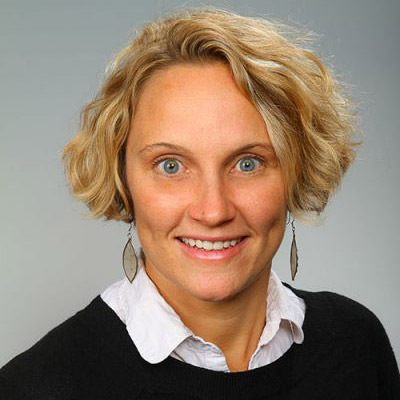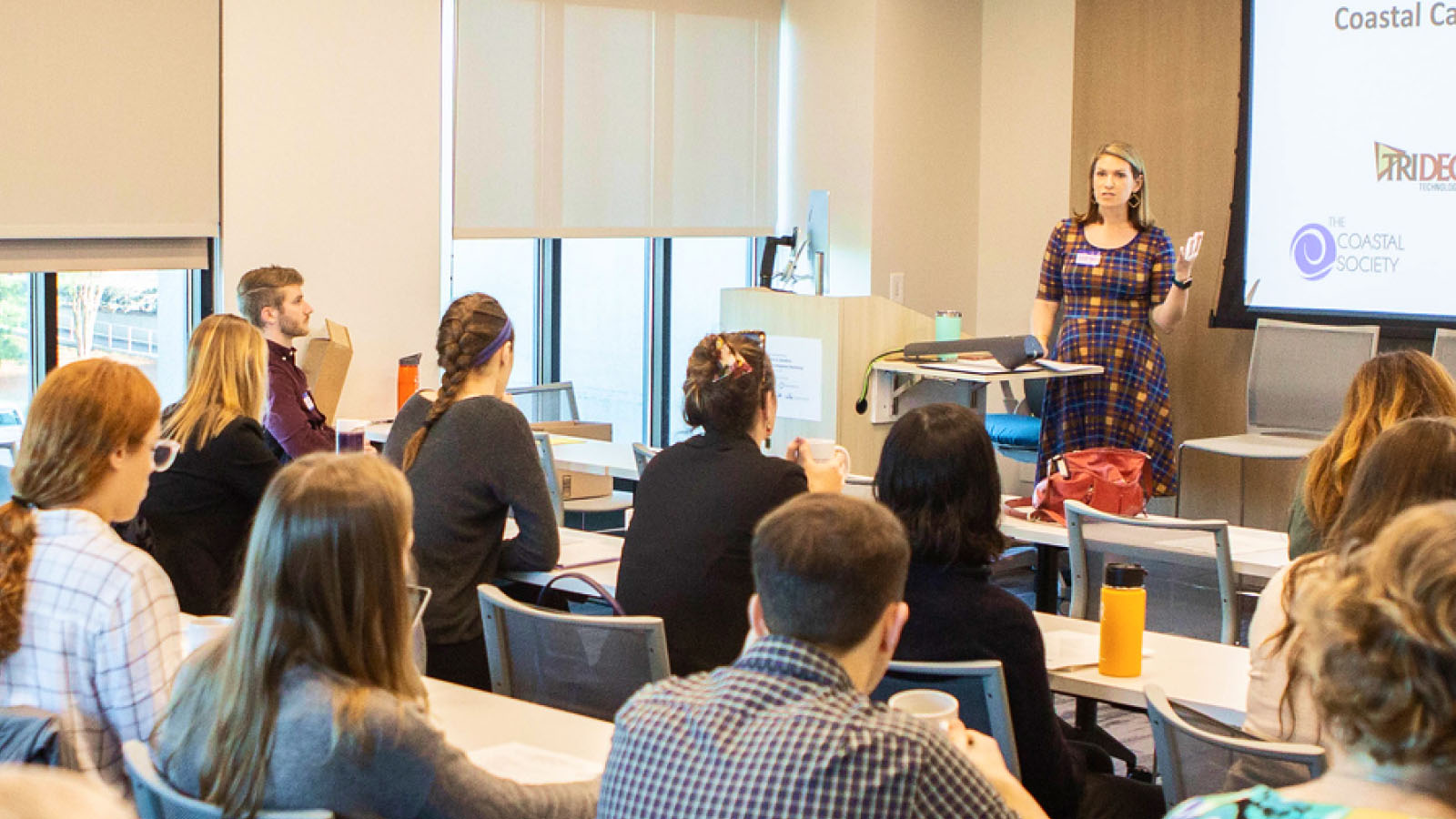The Takeaway: Learn the approach taken to get New Jersey towns to do hazards resilience planning.
Overview
After Post-Tropical Cyclone Sandy, municipalities in increasing numbers started looking for ways to make their communities more resilient. The Jacques Cousteau National Estuarine Research Reserve has helped over 30 municipalities in coastal New Jersey thus far by developing maps and information materials, facilitating meetings with local government staff members, and writing up the results in the form of community recommendations. The reserve staff members involved with this project say one of the most essential skills in working with communities is to be seen as a trusted source and be willing to listen and help facilitate the discussions.

Lessons Learned
- Building resilience is not a quick process, and nothing about working with municipalities ever happens quickly. It is about relationships and trust building.
- Resilience to coastal hazards is just one of the facets of resilience building. There are other aspects of resilience that will have to be considered as well, such as population growth and development pressures.
- Act as a real "trusted source" to the communities. Be willing to listen and help facilitate and provide mapping information, but make sure participants realize they know the most about their municipality.
- Maps are great tools, but they can also be scary. Make sure people understand that the maps are not there to freak them out or shut them down but to help them think about what they need to be aware of for the future—how to prioritize municipal projects and planning.
- Understanding risks and vulnerabilities, and planning for them, are important parts of the process, but implementing the recommendations is where the real differences will start to be realized.
The Process
Although staff members at the Jacques Cousteau Research Reserve have been actively working to improve coastal community risk and vulnerability, municipalities didn’t start asking for this help on a regular basis until the wake of Post-Tropical Cyclone Sandy. When Sandy recovery and rebuilding started, the reserve was well positioned to acquire post-Sandy NOAA funding and play a leadership role in these planning and discovery efforts.
Community Outreach
The reserve’s Lisa Auermuller, Jenna Gatto, and Chris Huch started by speaking at town council meetings to provide a quick overview of the free technical assistance offered by the Jacques Cousteau Reserve. Once the town or city commits, the reserve provides two checklists to get things started. The town uses these checklists to ensure that the right people are at the discussions and that participants are familiar with the municipal plans related to resilience planning (e.g., comprehensive plan, hazard mitigation plan, etc.).
Preparing for the Community Meeting
To prepare for the discussions, reserve staff members review plans, learn about the hazard issues, and identify which maps to supply. Maps provide a great way to make data visual and the relationship of different data sets more obvious. But it is important to present the right data, data that are helpful for the discussion and meaningful to the participants.
Lisa uses New Jersey’s Coastal Hazards Profiler to acquire the maps. This online tool pulls data from various sources and places it on the map. Lisa and project partners from Rutgers University worked with NOAA to acquire the code for this tool from NOAA’s Coastal Flood Exposure Mapper, a tool that provides data and information for communities just getting started in their risk and vulnerability assessment. They were able to tailor it to their local needs, mainly by adding more local data.
Conducting the Meeting
The first meeting lasts about two hours. The meeting usually involves a wide range of municipal representatives, including elected officials, public works managers, floodplain managers, emergency managers, community planners, natural resource planners, and business administrators. For many, this is the first time they are talking about these issues from a whole community perspective.
The conversation starts by asking the municipal staff members to describe their strengths, challenges, and opportunities. “One of the great learning experiences from these conversations is listening to the words the towns use to describe their issues.” This gives Lisa and her staff a better understanding of how to communicate with each town. For the next step, the reserve team brings out the maps.
Tools Used
-
Maps. The maps are shared electronically, either on a large screen or laptop, and staff members from the local government gather around for discussions. The maps are conversation starters and provide scientific validity. Although maps are just one resource to use, they provide an effective way to convey the information and to get people to start talking about their own experience and knowledge. For example, people can point to a map and say “we see flooding here every time it rains” or “we never saw the tide this high before.” The maps are a tool that helps lead them through this discussion of flood risk and recurrence.
Lisa and her team start with maps that people are most familiar with, such as FEMA flood insurance rate maps. Then they move on to sea level rise maps and get a better understanding of what an increase of two, three, and four feet of water looks like in the community. Research reserve staff members add additional science expertise to the conversation, providing a time horizon for various sea level rise projections.
Lisa says they use about 10-12 maps in their discussions, showing flooding, sea level rise, and storm surge, as well as maps that show impacts to community resources such as people, places, infrastructure, and natural resources. People look at the maps and find themselves more readily able to talk about the present and the future. Although municipal staff members know the issues from their individual perspectives, this may be the first time they are looking at them from a community perspective and talking together about risks and vulnerabilities.
-
The Community Self-Assessment. Depending on how the discussions go, the municipal staff may then start a community self-assessment, which is often accomplished using Getting to Resilience, an online questionnaire. The previous discussions about risk and vulnerability provide the community with the information needed to answer the questionnaire. Hazard potential, community strengths, plans, and programs are all covered, along with information about areas of success and places where improvements are needed. The questionnaire is a good place to capture these conversations and response. The community may decide to have another meeting to work through the Getting to Resilience questionnaire.
Outcome
Through this process, the municipality has taken an interdisciplinary approach to identifying hazards and community resources at risk. Because reserve staff members have been so involved in the process, they are able to write recommendations for each municipality and to include digital and hard copy maps. Examples of these recommendation reports can be found online at the Getting to Resilience website.
Although it’s up to the municipalities to adopt and implement the recommendations, Lisa and her staff are laying the foundation for resilience planning by getting the communities to take the first step—talking about the hazards, their impacts, and what they can do about them.
Community Actions
- Communities like Somers Point, New Jersey, have started to include sea level rise mapping in their master plan updates.
- Brick Township has formed a Flood Hazards Management Committee, and municipalities including Long Beach Township, Beach Haven, Little Egg Harbor, Brick, and Tuckerton are working on lowering the flood insurance rates for their citizens through FEMA’s Community Rating System.
- Regional barrier island areas like Long Beach Island are starting to look at regional risks and vulnerabilities, and looking at resilience not only at the municipal scale but also at the regional scale of a an 18-mile long, interconnected barrier island system.
Next Steps
The reserve hopes to continue this effort and encourage more of coastal New Jersey to implement on-the-ground changes that will protect people and property from the next storm. If money and time were no object, Lisa says “we would embed staff into the community to help the municipality implement the recommendations and engage with citizens.”
